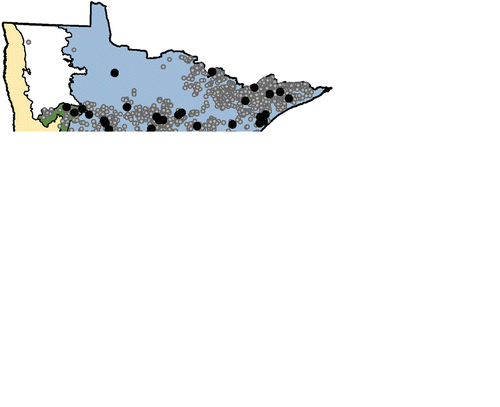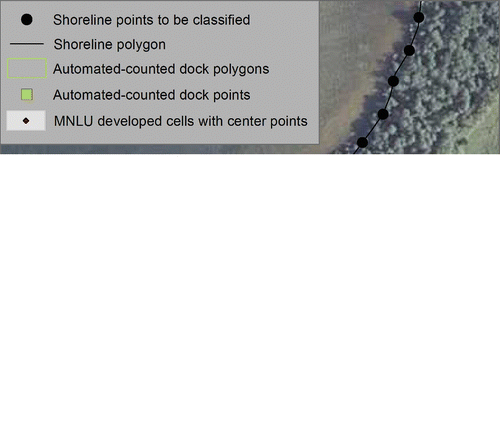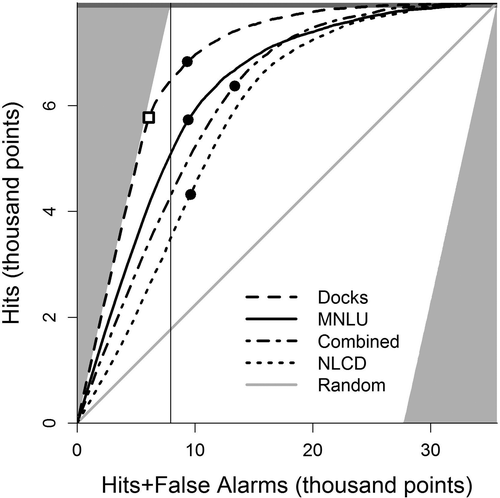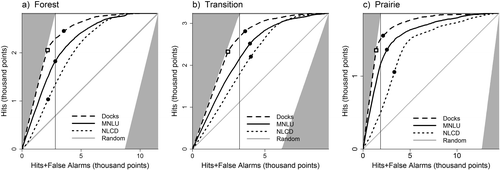Figures & data


Table 1 Measures of classification accuracy derived from confusion or error matrices, composed of the count data in the first 4 rows (Metz Citation1978, Fielding and Bell 1997).
Table 2 Selected characteristics for 150 Minnesota lakes as a whole and separated by ecoregion: Laurentian mixed forest (Forest); eastern broadleaf forest (Transition) and prairie parkland (Prairie). Developed shore points/km uses generated points along the shoreline classified by calculating their proximity to the nearest development indicator for each dataset: manual-counted docks, automated-counted docks, Minnesota Land Use and Cover (MNLU), National Land Cover Database (NLCD), and a composite dataset containing developed cells from each of the 2 raster datasets (Combined).



